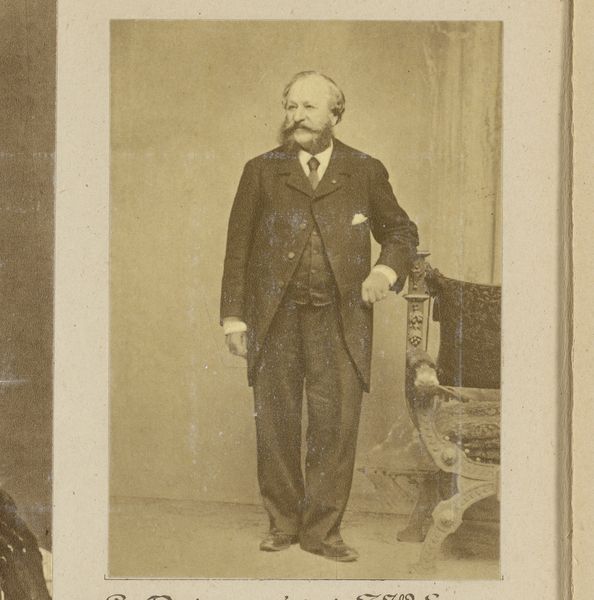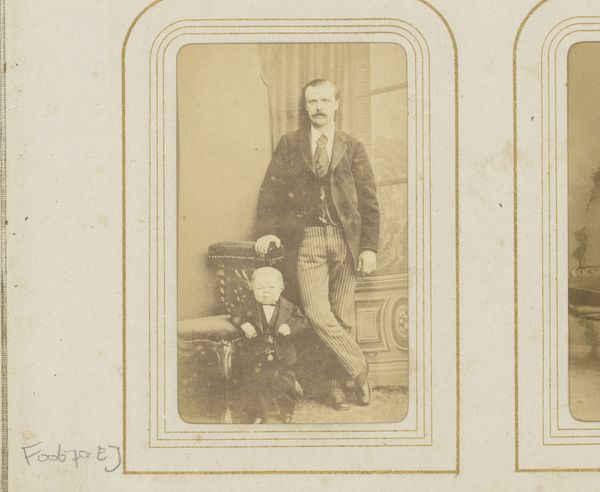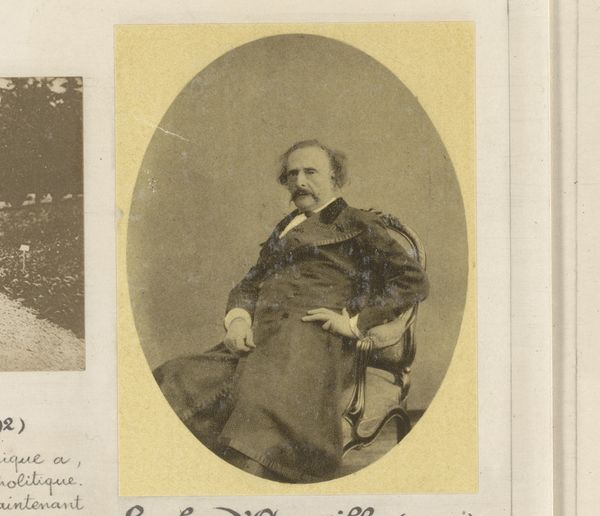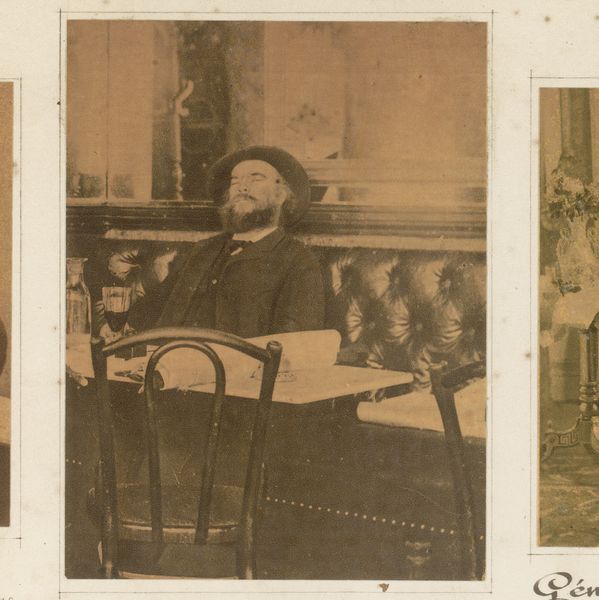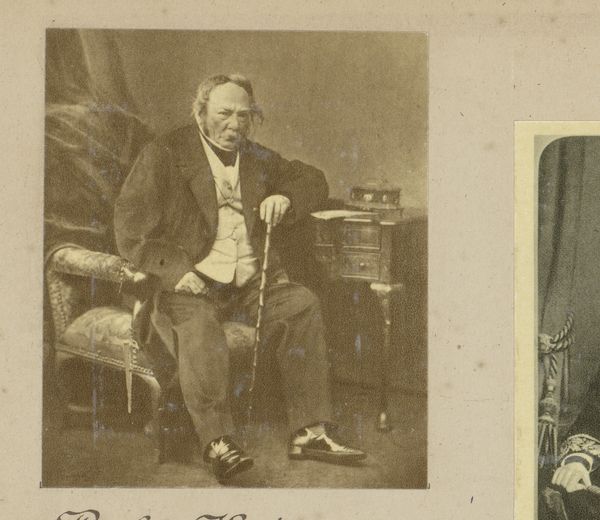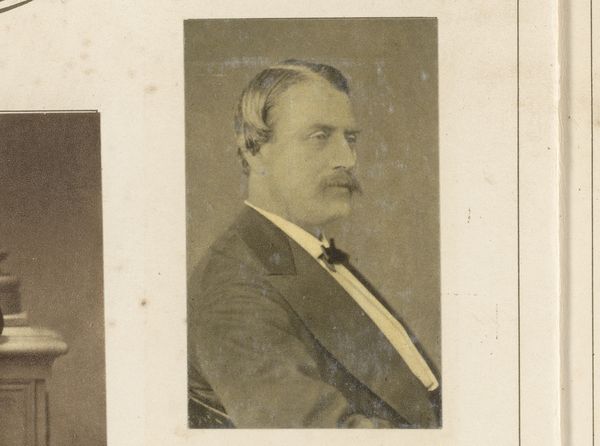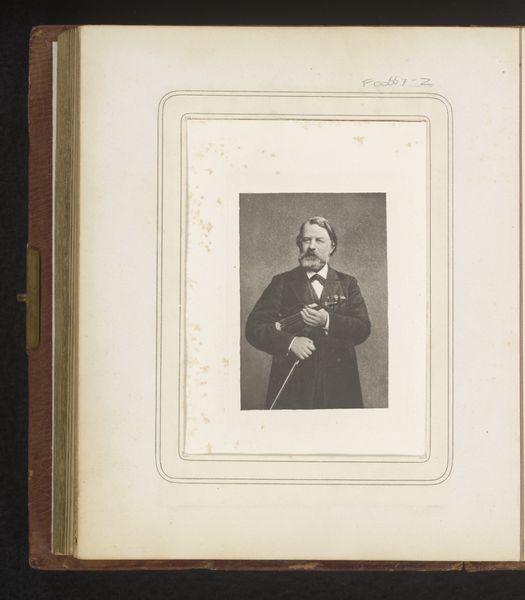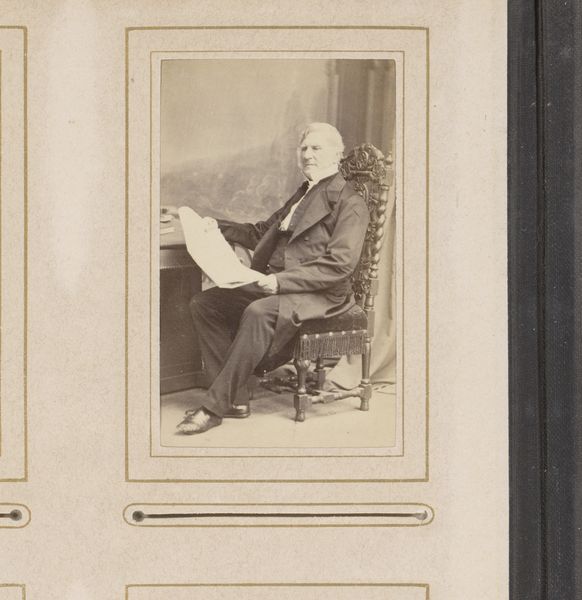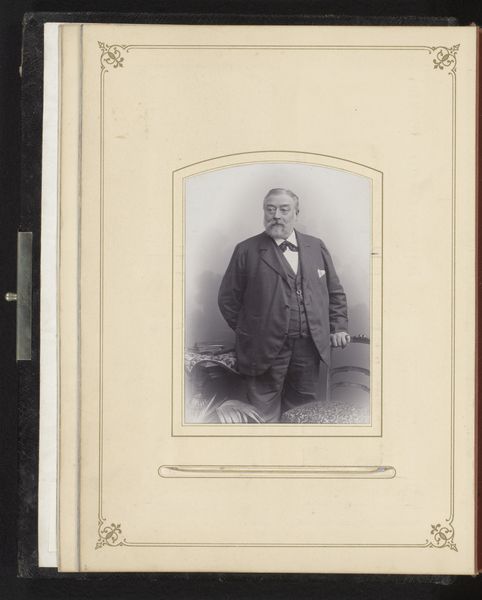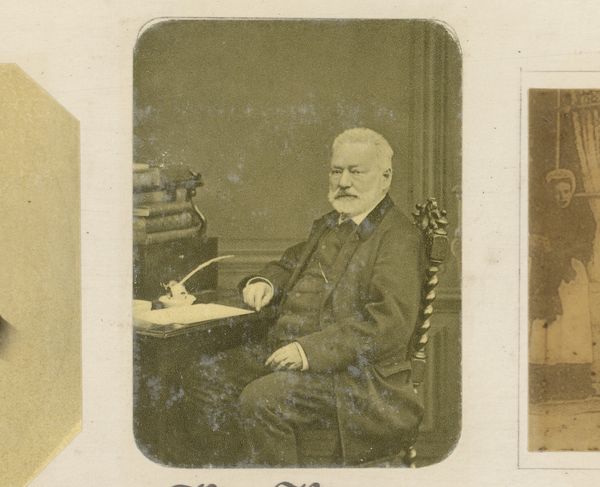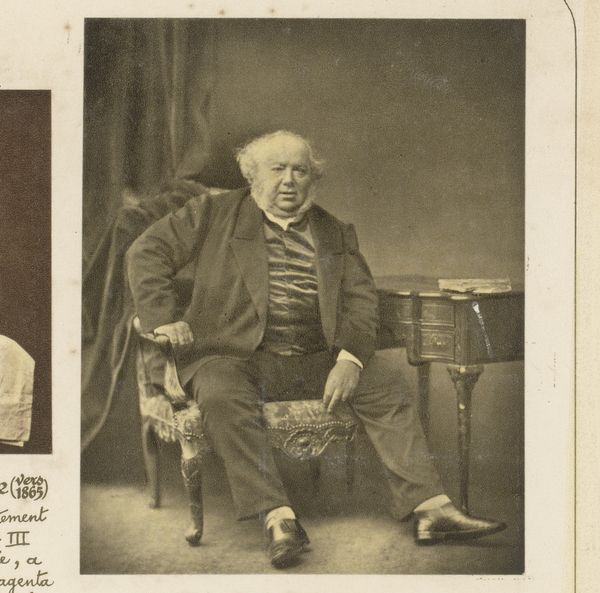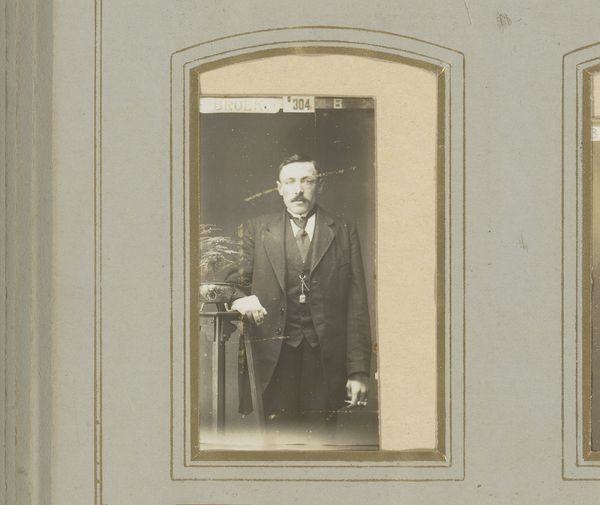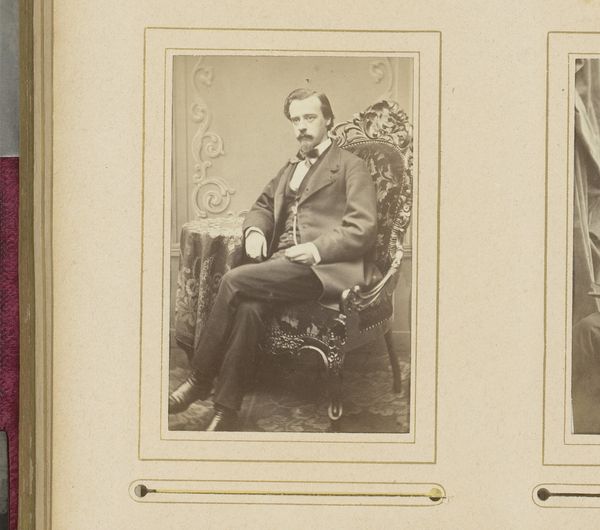
photography
#
charcoal drawing
#
photography
#
realism
Dimensions: height 96 mm, width 68 mm
Copyright: Rijks Museum: Open Domain
Curator: "Portret van Georges Boulanger," a piece of photography possibly from between 1868 and 1891, certainly has a somber feel. A solitary figure sits, smoking in an ornately decorated interior. What is your initial response? Editor: There’s a studied artificiality to this staging that immediately strikes me. The way the sitter interacts with his accouterments is very suggestive of production. You can see the meticulousness behind this photograph and, in fact, it is even considered to be a charcoal drawing, perhaps to imitate this form. Curator: That reading intrigues me because General Boulanger, the sitter, was such a divisive figure in French politics at the time. This carefully constructed image feels like a calculated attempt at self-fashioning, crafting a particular narrative around his persona. We see elements of wealth in the velvet textures, implying prestige. Perhaps there are further layers regarding political motivations and performance of power? Editor: Exactly. The trappings of luxury that form his surrounding seem designed to underscore his position. It invites questions of how these materials—the fabrics, the furnishings—were sourced and produced. There's a tension, in this supposed realism, between the implied comfort of the setting and the potential exploitation involved in creating that comfort. Who worked on them and how? Curator: Absolutely, by delving into the means of production you expose these social contradictions. But what I'm drawn to is how he manipulates his image to project a very carefully considered identity to French citizens—is it one of nonchalance and sophistication in a quickly industrializing nation that increasingly saw war, internal struggles, and class unrest? The subtle way he’s framed offers a glimpse into this constructed image as a commodity itself, perhaps foreshadowing an era of hyper-mediatization. Editor: The commodification of self-image, a telling reading! It pushes me to also consider the circulation of images during this period. Photography allowed for wider accessibility and consumption compared to traditional portraits. This raises important questions about its impact on the perception and dissemination of public figures. And on how craft began interacting with industry! Curator: So the image really sits at an intersection: between personal identity, political ambition, material realities, and early forms of mass communication. The careful framing of Georges Boulanger presents a curated fiction meant for public consumption and political capital. Editor: Agreed. Examining these materials allows us to peel back the layers of intention. From raw material to the staged moment in a photo studio, labor underpins it all, which gives the photography resonance in our current moment of media awareness and skepticism.
Comments
No comments
Be the first to comment and join the conversation on the ultimate creative platform.
